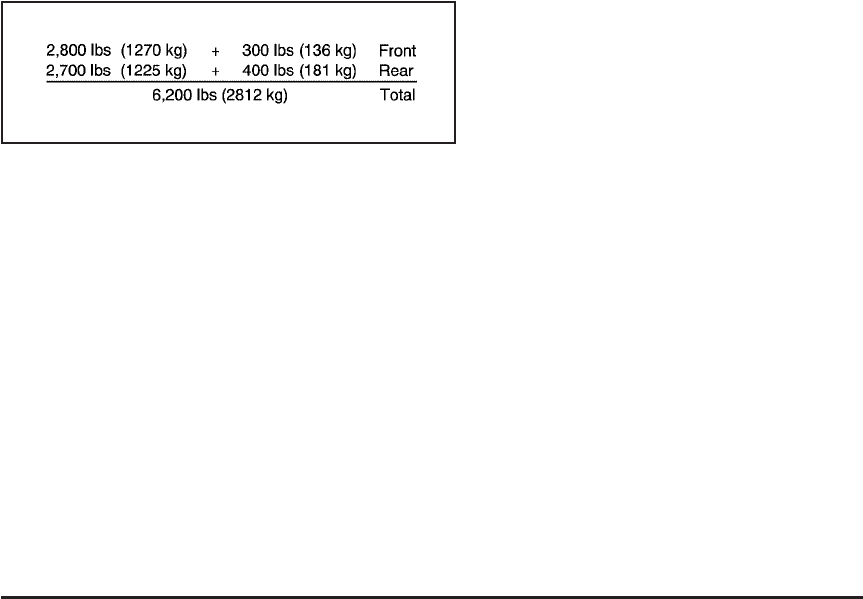
Your vehicle now weighs:
Weight is still below 7,200 lbs (3 266 kg) and you
may think that you should subtract 700 additional
pounds (318 kg) from your trailering capacity
to stay within GCWR limits. Your maximum trailer
would only be 7,800 lbs (3 538 kg). You may
go further and think you must limit tongue
weight to less than 1,000 lbs (454 kg) to avoid
exceeding GVWR. But, you must still consider
the effect on the rear axle. Because your rear
axle now weighs 3,100 lbs (1 406 kg), you can
only put 900 lbs (408 kg) on the rear axle
without exceeding RGAWR. The effect of tongue
weight is about 1.5 times the actual weight.
Dividing the 900 lbs (408 kg) by 1.5 leaves you
with being able to handle only 600 lbs (272 kg) of
tongue weight. Since tongue weight is usually
at least 10 percent of total loaded trailer weight,
you can expect that the largest trailer your vehicle
can properly handle is 6,000 lbs (2 721 kg).
It is important that you make sure your vehicle
does not exceed any of its ratings — GCWR,
GVWR, RGAWR, Maximum Trailer Rating
or Tongue Weight. The only way to be sure you
are not exceeding any of these ratings is to weigh
your vehicle and trailer.
Total Weight on Your Vehicle’s Tires
Be sure your vehicle’s tires are inflated to the
upper limit for cold tires. You’ll find these numbers
on the Certification label at the rear edge of the
driver’s door or see Loading Your Vehicle on
page 366. Then be sure you don’t go over
the GVW limit for your vehicle, or the GAWR,
including the weight of the trailer tongue. If you use
a weight distributing hitch, make sure you don’t
go over the rear axle limit before you apply
the weight distribution spring bars.
Hitches
It’s important to have the correct hitch equipment.
Crosswinds, large trucks going by and rough
roads are a few reasons why you’ll need the
right hitch.
381


















